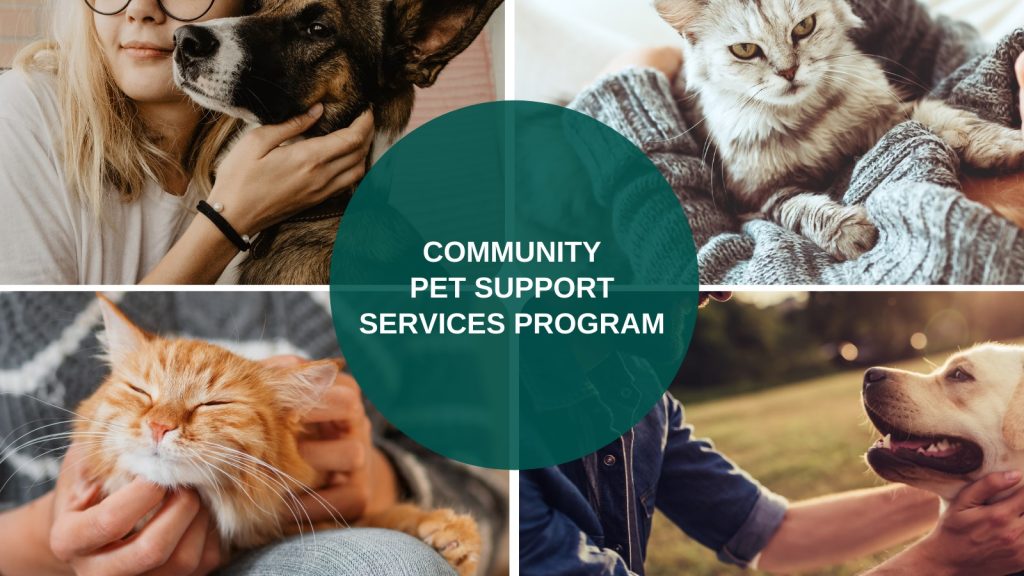How Pet Adoption Can Promote Inclusion and Diversity in Communities

The Ripple Effects of Pet Adoption in Communities
Adopting a pet is not just an act of kindness; it serves as a catalyst for strengthening community bonds and enhancing social fabric. Research indicates that the act of bringing a shelter animal into one’s home can significantly encourage inclusion and diversity within neighborhoods. Many regions across the United States have experienced considerable transformation due to focused pet adoption initiatives, highlighting the profound impact that a single act can have on an entire community.
One of the most compelling ways that pet adoption fosters diversity is through the concept of bridging cultures. Pets inherently do not discriminate; they offer companionship, love, and joy to people from all walks of life. Community parks, dog-friendly events, and pet parades often see a mosaic of individuals coming together, sharing stories and experiences shaped by their lives with their animals. For instance, in cities like San Francisco and New York, communities have organized multicultural pet expos that not only promote adoption but also celebrate various cultural backgrounds, strengthening communal ties.
Moreover, pet ownership encourages a sense of shared responsibilities. Neighborhoods often organize collective events like clean-up days at local parks or adoption clinics, which foster collaboration among residents. Events such as “Paws in the Park” or “Adoption Days” offer a unique platform for people to bond over their shared love for animals, creating lasting friendships and networks. These activities not only make communities more vibrant but also provide opportunities for local businesses to engage with residents, thereby boosting the local economy.
Additionally, community outreach is pivotal in breaking down barriers. Local shelters and rescue groups actively work to connect with underrepresented groups, ensuring that the message of pet adoption reaches diverse populations. Many organizations implement programs in low-income neighborhoods, offering free or low-cost vaccination and spay/neuter clinics. This approach not only makes pet ownership more accessible but also fosters a greater understanding of the joys and responsibilities associated with it.
The narrative surrounding adopted pets frequently reflects the diverse backgrounds they come from, enabling communities to engage in dialogues about empathy and responsibility. Pets often have unique stories that resonate with their new families, emphasizing the importance of compassion and care. This storytelling aspect can inspire others to get involved and see the broader importance of looking beyond mere ownership; it’s about joining a community dedicated to making a difference.

As more individuals embrace the practice of pet adoption, communities unlock new pathways for cultural exchange and social integration. The journey toward inclusivity facilitated by uplifted spirits and wagging tails is vital in today’s multifaceted society. Little by little, one adopted pet at a time, we are reminded of our shared humanity in a world that thrives on diversity.
DISCOVER MORE: Click here to learn about pet nutrition
Connecting Through Common Interests
The phenomenon of pet adoption has a unique ability to transcend individual differences, acting as a bridge that connects people from various cultural, economic, and social backgrounds. As communities rally around the cause of animal welfare, they often discover common interests that foster inclusivity. The underlying principle is simple: when individuals come together for a shared purpose, they unleash the potential for lasting relationships and mutual respect.
One effective method to promote inclusivity is through community pet events. These gatherings present opportunities for local residents to unite and celebrate their love of animals. Across the United States, towns and cities have successfully hosted festivals, such as “Bark in the Park” or “Woofstock,” where pet lovers can showcase their furry companions and connect over shared interests. Typically featuring vendor booths, contests, and even agility demonstrations, these events draw diverse crowds. In fact, studies have shown that approximately 60% of attendees at such events identify as belonging to minority groups, illustrating the inclusive nature of pet-centric gatherings.
Furthermore, community engagement goes beyond just events; it also encompasses outreach programs and educational workshops. Local shelters often collaborate with community organizations to host educational campaigns that aim to enlighten residents about the benefits of pet adoption. These workshops can cover a variety of topics, including pet care, humane treatment, and the advantages of adopting over buying. By bringing information to various neighborhoods, particularly underserved ones, these initiatives help raise awareness and encourage participation in the adoption process.
To better understand the diverse impact of pet adoption initiatives, consider these key aspects:
- Fostering Empathy: Through shared experiences and stories, pet adoption highlights the emotional connections formed between pets and their owners. This promotes empathy across cultural boundaries.
- Encouraging Volunteerism: Many shelters rely on volunteers to operate effectively. Individuals from different backgrounds often come together to assist in various activities, fostering community spirit and solidarity.
- Creating Safe Spaces: Pets can break down social barriers, facilitating open conversations among community members. Parks and pet-friendly venues become safe spaces for people to connect without fear of judgment.
The narrative evolving from pet adoption showcases the real-life impact on community dynamics. Adopting a pet often leads to a broader dialogue about inclusion and diversity, reinforcing the notion that everyone, regardless of their background, can contribute to a healthier and more connected community. Additionally, as neighborhoods become more engaged, local governments often recognize the importance of these activities and may offer support through funding and resources, further solidifying the benefits derived from such initiatives.
| Advantage | Impact on Community |
|---|---|
| Diverse Community Engagement | Pet adoption events often bring together individuals from various backgrounds, fostering stronger community ties. |
| Empathy and Understanding | By caring for adopted pets, community members develop greater empathy toward others, enhancing social connections. |
The process of pet adoption significantly enriches communities by promoting diversity and social inclusion. By organizing various adoption drives, local shelters create platforms where members of the community from different backgrounds engage with one another. This interaction not only promotes understanding across cultural divides but also encourages collaboration in community development activities. Moreover, adopting a pet requires a commitment that educates both the owner and their family about responsibility and compassion. These qualities are essential in building a society that values diversity, as they contribute to a more inclusive environment. When communities embrace diverse pet adoption practices, they sow the seeds for unity and support among all community members, thereby reaping long-term social benefits. With the rise of social media, sharing stories of adopted pets can also empower individuals to recognize common interests, fostering relationships that transcend cultural barriers. These narratives highlight the collective effort to create inclusive spaces that welcome everyone, and further emphasize the positive societal changes initiated through animal adoption. Getting involved in local pet adoption initiatives not only benefits marginalized animals but enriches community life as well. By understanding the broader implications of pet adoption, individuals can contribute to a more cohesive and diverse society.
DIVE DEEPER: Click here to discover how positive reinforcements can change your pet’s behavior
Building Community Resilience Through Pet Adoption
Beyond the individual connections formed through pet adoption, there is a compelling case to be made for how these initiatives can bolster community resilience, particularly in areas facing socioeconomic challenges. When people adopt pets, they not only gain companionship but also become part of a larger network that fosters solidarity and support among diverse populations.
One of the most impactful aspects of pet adoption in promoting inclusion and diversity is its ability to address mental health issues prevalent in many communities. The companionship of pets has been shown to reduce feelings of loneliness and depression, common afflictions in marginalized groups. A survey by the Human-Animal Bond Research Institute revealed that around 74% of pet owners feel that their pets have positively affected their mental health. This statistic underscores the role pets play not only as companions but as facilitators of emotional well-being, enabling individuals from different backgrounds to share experiences and support each other.
- Enhancing Social Interaction: Adopting pets opens up new avenues for social interaction. Dog owners, for example, often congregate in parks and at dog-friendly spaces, leading to organic conversations that can bridge cultural or socioeconomic divides.
- Strengthening Local Economies: Community pet adoption events can stimulate local economies. Pet supply vendors, groomers, and veterinarians often see increased business during these events, which can be particularly beneficial in underserved neighborhoods where economic disparity is evident.
- Facilitating Mentorship Opportunities: Animal shelters frequently seek volunteers for adoption events, fostering an environment where diverse individuals can share knowledge and experience. Older, more experienced volunteers can mentor younger community members, breaking down barriers and encouraging community engagement.
Moreover, the structures built around pet adoption initiatives often reflect the diverse fabric of the community they serve. For instance, shelters may organize community outreach programs in multiple languages to ensure everyone has access to vital information about pet care and adoption processes. This inclusivity encourages participation from non-native English speakers who may have previously felt disconnected from mainstream adoption efforts.
Interesting to note is that some cities, such as San Francisco, have taken a unique approach by offering pet adoption programs that cater specifically to low-income residents. Such initiatives not only provide reduced fees for adopting pets but also include resources for pet care and veterinary services, demonstrating a commitment to making pet ownership accessible to all, regardless of economic status. This model fosters a greater sense of belonging and community, enabling individuals from diverse socioeconomic backgrounds to enjoy the benefits of pet companionship.
In addition, strategic partnerships between local governments, zoos, and environmental organizations can amplify the reach of pet adoption programs, further enhancing community inclusivity. Collaborative initiatives can focus on raising awareness about the importance of responsible pet ownership, leading to a more informed, caring community. For example, outreach efforts may include workshops in libraries or community centers aimed at educating families about the impact of pet adoption on both the pet and the owner.
As pet adoption continues to evolve as a vital aspect of community life, it not only addresses the pressing need for animal welfare but also plays a significant role in bridging gaps between people. This multifaceted approach serves to create not just a community of pet owners but a tapestry of rich, diverse experiences where every individual can contribute to a shared mission of compassion and care.
DIVE DEEPER: Click here to learn more about pet nutrition
Conclusion: The Transformative Power of Pet Adoption
In conclusion, the impact of pet adoption on fostering inclusion and diversity within communities cannot be overstated. By bringing together individuals from various backgrounds under the shared experience of pet ownership, these initiatives cultivate an environment of empathy, support, and camaraderie. As highlighted, the positive effects on mental health alone reflect the potential for pets to act as bridges between disparate cultural and socioeconomic groups, ultimately enhancing social cohesion.
Moreover, community-driven efforts, such as multilingual outreach and affordable adoption programs, not only increase access to pet ownership but also affirm the value of every resident’s contribution to the community fabric. Cities leveraging partnerships with local organizations demonstrate a commitment to furthering these goals, enabling diverse populations to participate in enriching activities centered around animal welfare.
As we contemplate the future of pet adoption, it becomes clear that such programs are more than just about finding homes for animals; they are about building resilient communities that value and uplift every member. For local leaders and residents alike, the message is evident—by embracing the power of pet adoption, we can work towards not only a more inclusive society but also a future enriched by the diversity of shared bonds and collective responsibilities.
Ultimately, exploring the intersection of pet adoption and community inclusion encourages us to consider how we can be proactive in fostering connections that enhance our overall quality of life. The journey towards a compassionate, diverse, and united community may just begin with the simple act of opening our homes and hearts to our four-legged friends.


